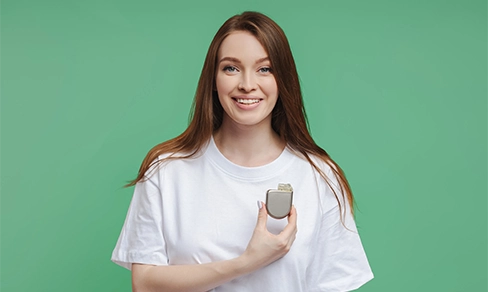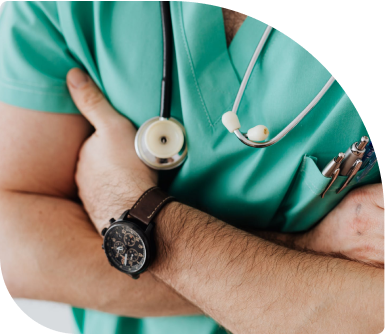— Procedures
CRT-ICD Devices
A CRT-ICD (also known as CRT-D) is a special type of pacemaker and defibrillator that enables both sides of the heart to pump in a coordinated way, helping to reduce the risks and symptoms of heart failure.
CRT-ICD Devices Explained
A CRT-ICD (also known as CRT-D) is a special type of pacemaker and defibrillator that enables both sides of the heart to pump in a coordinated way, helping to reduce the risks and symptoms of heart failure.


What are pacemakers?
A pacemaker is a small, implantable device that monitors the heart for rhythm problems. If a problem arises, the device can deliver a tiny electrical pulse that stimulates the heart into correcting its abnormal rate. There are several kinds of pacemaker, each designed to handle different types of heart problem:
Standard pacemaker – which delivers corrections to one, two or three chambers in the heart
Cardiac resynchronisation therapy (CRT) device – a heart failure pacemaker that enables the chambers to beat in time with each other (heart failure is when the heart doesn’t pump as efficiently as it should)
Implantable cardioverter defibrillators (ICD) – a heart failure pacemaker that can deliver a small shock or faster pacing impulse to reset the heart rhythm
CRT-ICD (or CRT-D) devices – a pacemaker that combines both CRT and ICD functions in one small unit
For more detail about standard pacemakers, head to our Pacemakers section. For more about devices specifically aimed at heart failure, see our main Heart Failure Pacemakers section.
What is a CRT-ICD pacemaker?
A CRT-ICD device, also known as a CRT-D pacemaker, combines two types of heart failure treatment in one: Cardiac resynchronisation therapy (CRT) and Implantable cardioverter defibrillation (ICD). It’s helpful to know a little about how these two treatments work. To summarise:
CRT paces the heart to correct delayed electrical signals, which can prevent the lower chambers (the ventricles) from working together efficiently; the CRT device paces the heart to “resynchronise” the ventricles and make them contract together normally.
ICD is like a miniature, internal defibrillator machine for the heart: if it detects a dangerous rhythm problem, it delivers tiny electrical shocks that correct the issue
As well as monitoring the heart for rhythm problems, CRT-ICDs can deliver a stronger pulse of electrical energy than a regular pacemaker; this burst of energy resets the heartbeat and helps prevent further complications, such as sudden cardiac death.
For more detail on CRT, see What is a CRT pacemaker? in the Heart Failure Pacemakers section of our website. You may also find this news article helpful: CRT for heart failure? A major trial offers new hope for patients. For more on ICDs in general, head to the Internal Defibrillators section.
Patient’s thoughts

Jonathan’s Expertise
Common Questions
Book a Consultation
Reach out and book a consultation with Jonathan.
Expert TREATment
Heart Conditions
Experience expert treatment for heart conditions, with personalised care and advanced technology with Jonathan Lyne Heart Rhythm Cardiologist.
Extra heartbeats, usually harmless, occasionally need further investigation for caution.